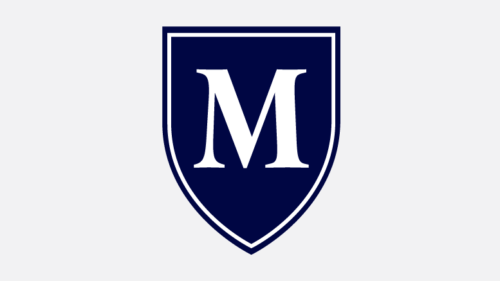Jill Smith
Staff Writer
jsmith194@murraystate.edu
President Bob Jackson and University vice presidents hosted a Budget Town Hall meeting on Thursday, April 28, to address next year’s budget, including cost-of-living adjustment (COLA) and a proposed tuition increase.
COLA is an increase in pay and benefits related to increases in the cost of living.
The University has proposed a 2.5-3% COLA, which will cost approximately $2.4 million.
Vice President of Finance Jackie Dudley said this has been the largest COLA increase since Fiscal Year 2014, but payroll will not be affected by the increase.
“Our health insurance estimate increased a little over $600,000 this year, so institutionally, we’ll be covering that increase instead of passing any of that on as an employee premium,” Dudley said.
The University will propose to increase tuition for undergraduate and graduate students by 1.95% at the next Board of Regents meeting.
Student enrollment constitutes approximately 71% of the budget, three-quarters of those funds going toward faculty and staff pay and benefits.
Jackson said this issue is a problem that needs to be addressed in higher education.
“You’ve outlined that the problem of higher education has been going on … for a number of years, and we’ve demonstrated a significant COLA,” Jackson said.
Eran Guse, associate professor of economics and finance, said the problem is external and suggested another solution to some of the budgetary concerns.
“An income share agreement is basically allowing [students] to go to university without paying too much, and then they have to pay back … a proportion of their income, and this creates a revenue stream,” Guse said. “That’s a long revenue stream for the University many years after, and I think this would create a great return on an investment.”
Next, Faculty Regent Melony Shemberger said it was indicated that COLA would be calculated through tuition as expected, but she asked if this included performance funding. She also asked that if this was the case, then would it continue to be a base structure of the budget in future years.
Jackson said it is important for administration, faculty and staff to understand the Performance Funding Model, as they play a big role in the University’s budget. Jackson said the University is budgeting for the estimated $3.3 million of performance funding they will receive from the Council on Post Secondary Education.
This will also be the first time the University will receive funding per the Performance Funding Model. This model looks at 11 metrics to determine funding for each fiscal year.
The first 35% of the funding is based on student success outcomes, according to kypolicy.org. This includes bachelor’s degrees awarded per 100 undergraduates; number of students passing benchmarks of 30, 60 or 90 credit hours; and bachelor’s degrees earned by underrepresented minority students, among other metrics.
Another 35% of the funding is based on the total number of credit hours earned by students. This is weighted differently based on upper level and graduate courses.
The last 30% is figured with operational support needs in mind, such as academic support services or maintenance based on campus size.
The University will budget over $3 million to be used for recurring expenses, which will be addressed at the June Board of Regents Meeting. This amount is Murray State’s portion of the $97 million appropriated into the Performance Funding Model for universities statewide.
Director of Governmental Relations Jordan Smith said cuts to state appropriation have occured over the last few years, but it is a win for the University that cuts were not made this year.
“We didn’t have any reduction in the Fiscal Year 22-23 pension appropriation of $3.2 million,” Smith said. “However, we did not receive $981,000, which we needed recurring for 30 years for our overall pension shortfall.”
Additional changes have been made to the Kentucky pension system.
The Kentucky Employees Retirement System is now broken into two parts: a certain percentage of payroll and a fixed amount that is paid annually.
“The fixed payment that we’re going to be paying in this year is $7.2 million, and we anticipate paying $7.2 million for the next 30 years each year, and that is expected to pay off our liability on a KERS pension system based on how much we already had in our budget,” Dudley said.
While the University did not receive funding needed for the pension program, funding was approved for a new Veterinary Center, and $45.5 million in general fund monies will go toward a new School of Nursing and Health Professions building.
The University also allocates funds in the budget to maintain a contingency of $2 million. This is used for any emergencies that may arise during the next fiscal year.
“We’ve had that for many years here, and that’s a contingency if we have emergencies or we have enrollment challenges or whatever it might be,” Dudley said. “We do maintain that in our budget, and that’s very beneficial for a few years.”
Concerning the proposal of a tuition increase, Provost Tim Todd said CPE tuition model doesn’t go above 2% and the plan is to stay under that.
“Our goal was to stay a little bit below that as much as we could,” Todd said. “You’ll see we’re going to be proposing to the board a 1.95% tuition increase that will be undergraduate and graduate rates.”
Todd said scholarship funding has been increased for the 2022-23 Fiscal Year.
“We’re talking about $42 million of scholarships to our students, so that’s what we returned back to our students from our appropriation and from tuition and fees,” Todd said. “It’s right around a 40% discount rate, so for every dollar of tuition we take in, we return those scholarship dollars back to the student to the tune of a little over $40 million.”
Jackson said while the last two years have been challenging for everyone, Murray State was one of the few institutions that avoided furloughs, layoffs and pay and benefit cuts.
The University will continue to make decisions concerning the budget in the coming weeks.
Jackson said this is something he hopes to host again in the future.
For those who missed the Budget Town Hall meeting, visit the Streaming page on Murray State’s website at murraystate.edu/streaming.




























































































